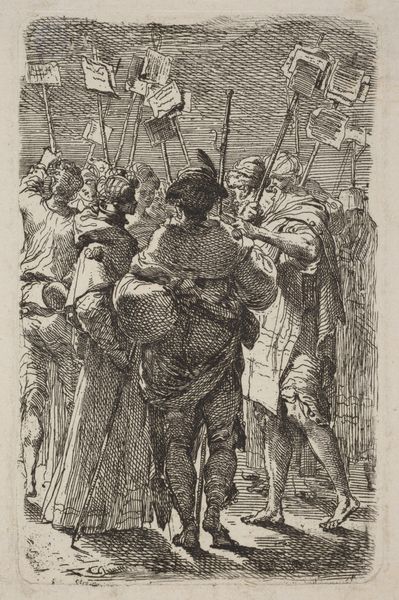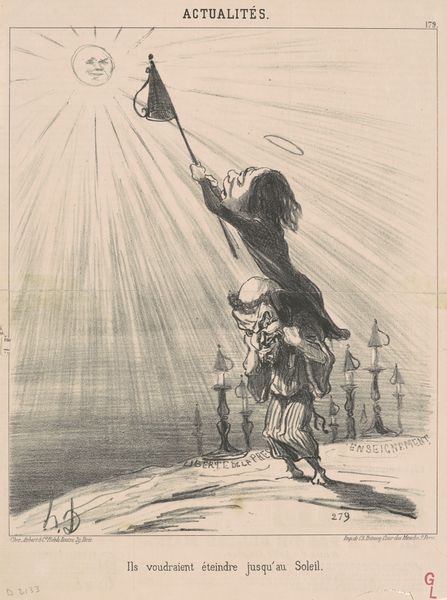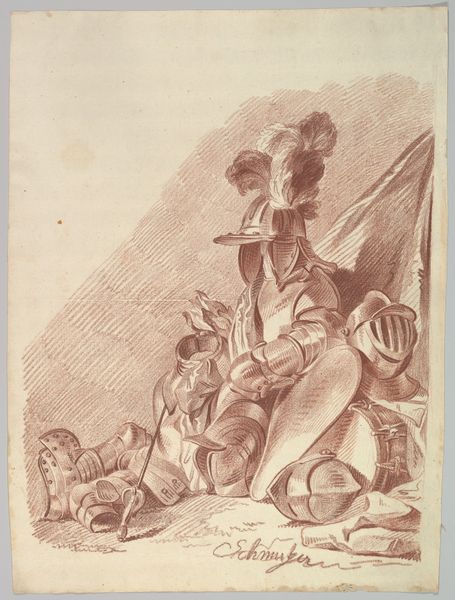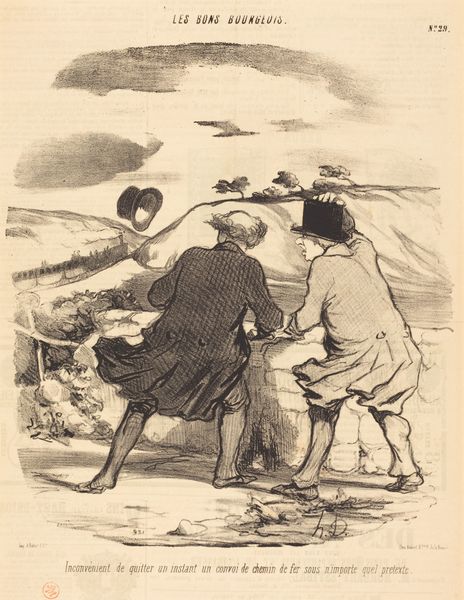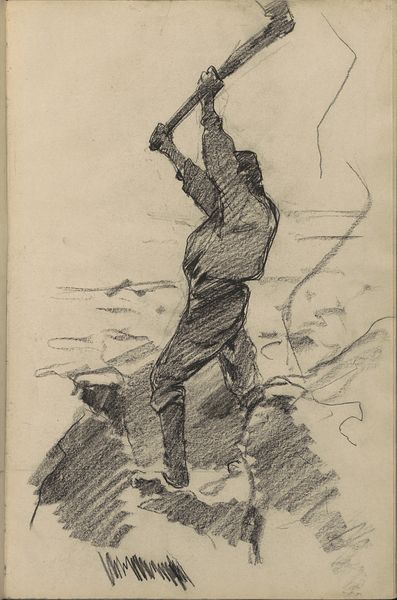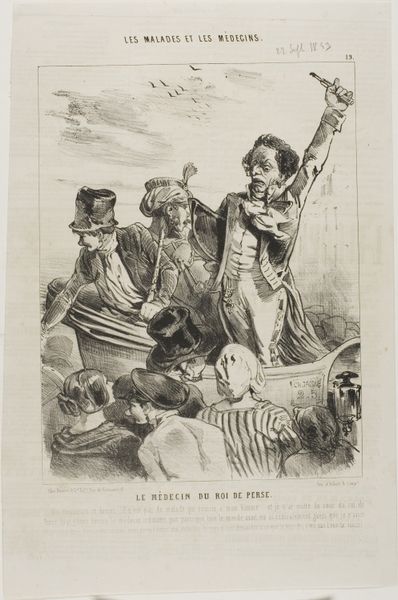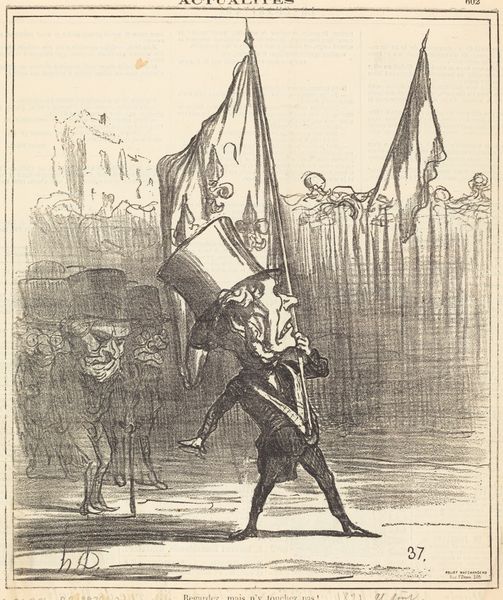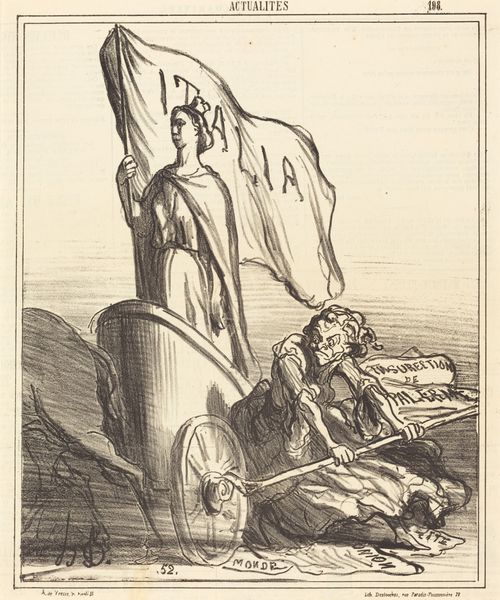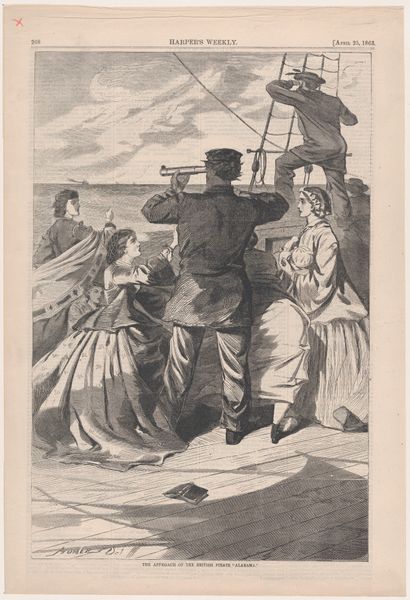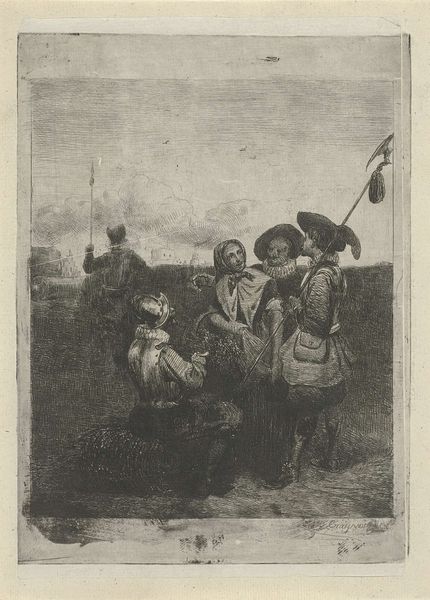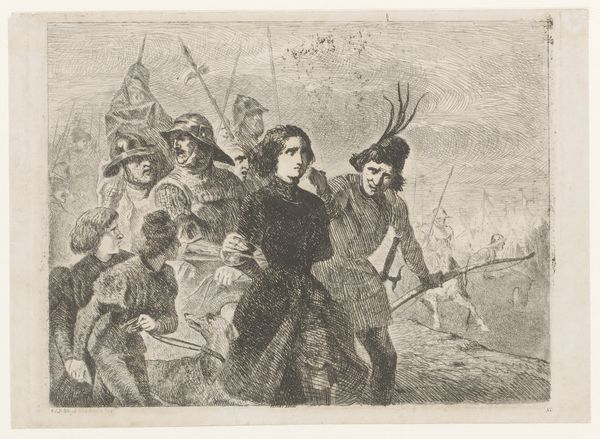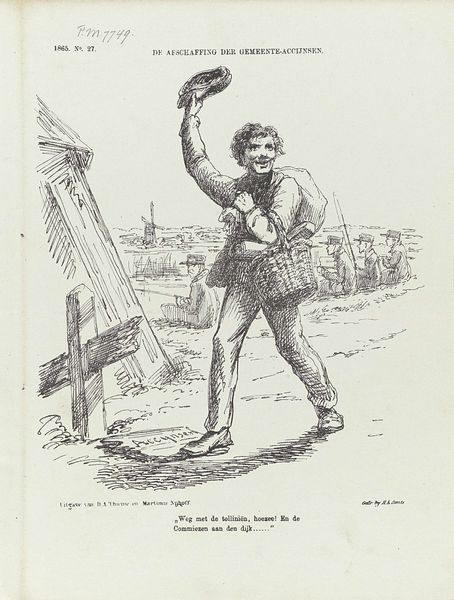
lithograph, print
#
lithograph
# print
#
caricature
#
figuration
#
romanticism
#
genre-painting
#
history-painting
Copyright: National Gallery of Art: CC0 1.0
Editor: Here we have "Un jour de revue," a lithograph print by Honoré Daumier, from around the 19th century. It’s incredibly dynamic, almost chaotic. The figures in the foreground seem to be erupting out of the page. What do you see in this piece from a formal perspective? Curator: Indeed, the energy is palpable. Notice how Daumier employs stark contrasts in light and shadow, particularly in the rendering of the faces and uniforms. Observe, too, the vigorous hatching technique. This creates not only tonal variation, but also conveys a sense of restless movement. Does the linear quality strike you as particularly forceful? Editor: Yes, definitely. The lines seem almost agitated, especially around the central figure and the crowd. It definitely enhances the feeling of frenzy. What about the composition itself? Curator: The composition guides the eye through carefully orchestrated chaos. Note how Daumier places the central figure, Ratapoil, slightly off-center, creating visual tension. Observe, also, the strategic use of perspective – the diminishing figures in the background contribute to the sense of depth and vastness, while the dense, interwoven forms in the foreground amplify the immediacy of the scene. Editor: So it’s the interplay between these formal elements – line, contrast, composition – that create such a powerful impact? Curator: Precisely. Consider also the formal characteristics of caricature at play here. The exaggeration amplifies the overall expressive affect; one may consider to what end this expressivity may drive? Editor: It's fascinating how breaking down these elements gives you such a deeper appreciation for what Daumier was trying to achieve. Thanks for pointing that out! Curator: The analysis has sharpened my awareness, as well. It’s a testament to the piece’s enduring power, and a study in compositional form.
Comments
No comments
Be the first to comment and join the conversation on the ultimate creative platform.
